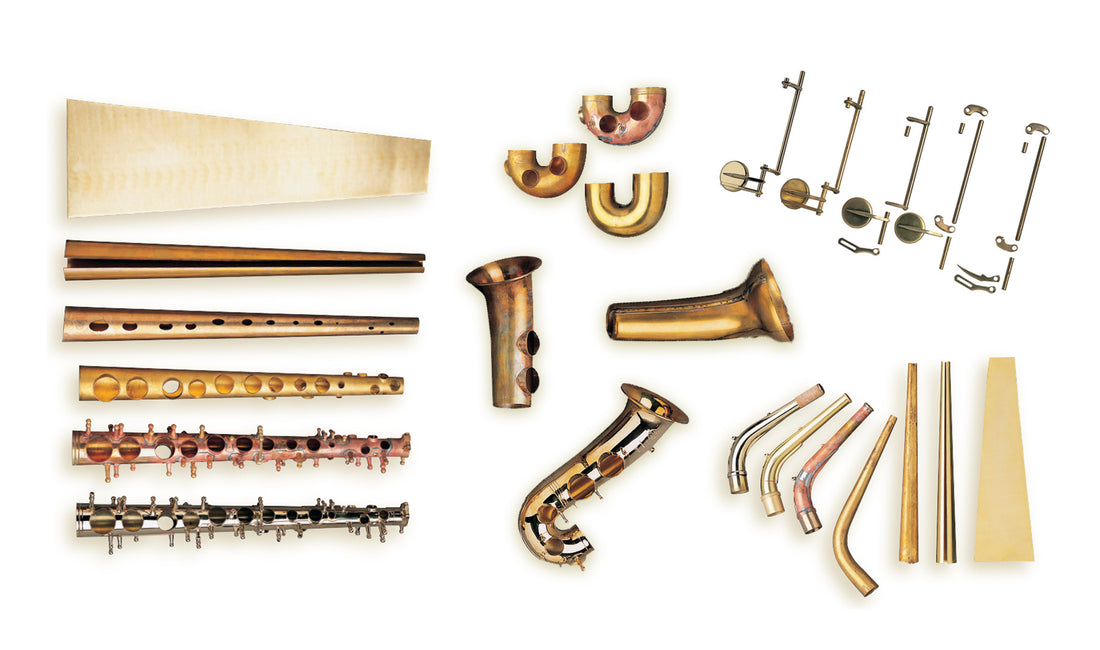Anatomy of the saxophone


The neck
The neck is cone shaped, and it plays a very important part in the total acoustic result, as the slightest variation in its interior volume or length has a direct influence on its accuracy, ease of blowing and tone colour.

The body
Extending from the cone of the neck, there are a number of holes (the tone holes) all down the entire length of the body. Their diameter increases in the direction of the widening out of the cone. It is on this section that the essential infrastructure of the keywork is fixed.

The bow
This is the low curving part connecting the body to the bell. This part does not exist on the Soprano (except for the curved Soprano) and Sopranino models, being straight instruments. The bow, a sensitive part requiring delicate design is crucial for the production of low notes.

The bell
The sound is emitted through the flared bell. This part is generally interdependent with the bow and partly determines its projection quality. It is more or less long and flared according to the models because these aspects play on the timbre and the projection.

The keywork
Taken together, the keywork includes all of the primary pieces which constitute the keys, side keys, spatulas, as well as the connecting elements between them like the rods, which allow them to work.

The guards serve to protect the keys of the low notes of the saxophone, which are much more exposed to shocks than the rest of the mechanism. Guard design makes it possible to identify both the model and the production date of each instrument. The first guards which appeared on models 22 and 26 were very light filament guards. From the Cigar Cutter onwards, guard design was appreciably advanced through the adoption of a triangular base. On the 1936 “Balanced Action”, the guards are embossed and on the Tenor, the low B and Bb guards are separated. An adjustable felt system integrated into the guards makes it possible to adjust the opening of the pad cups. Since the return of the double guard on the “Mark VI” Tenor, it has been this type of guard that has been used right up to current day models.
Modern organology classifies the saxophone as a woodwind, even if its manufacture brings it closer to that of the brass range. In fact, it is the mode of excitation of the air column (mouthpiece plus reed) which justifies this classification.
► Discover the saxophone family